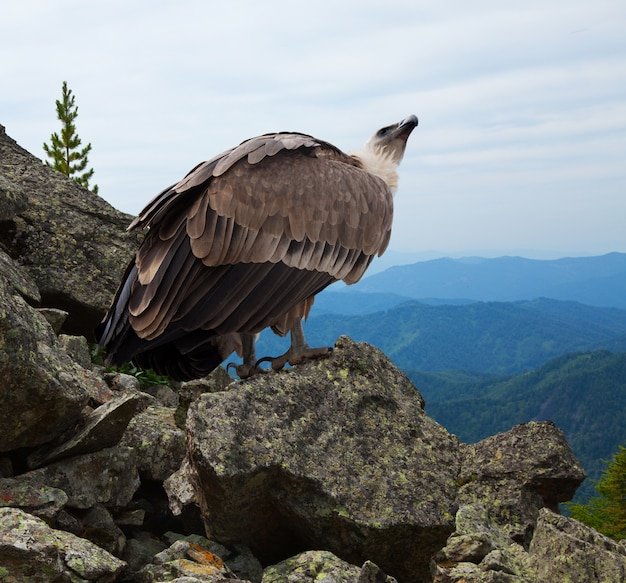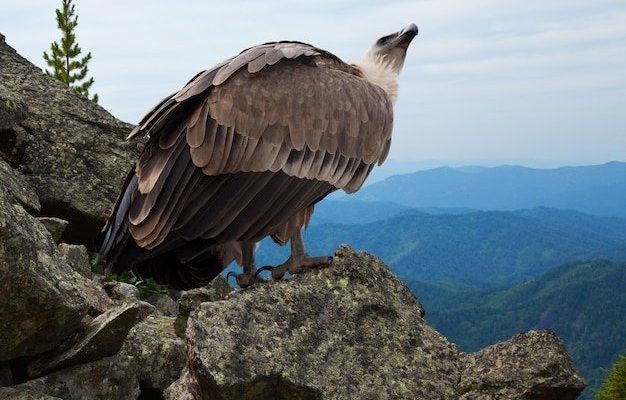
Griffon Vultures primarily inhabit mountainous regions and open landscapes in Europe, Asia, and parts of North Africa. They play an essential role in the ecosystem by consuming carrion, which helps keep the environment clean. But what should you do if you come across one? Understanding their behavior and your approach can enhance your experience and ensure safety for both you and the bird. So, let’s dive into what makes these birds so unique and how to engage with them responsibly.
Recognizing a Griffon Vulture
Before we get into what to do when you see one, it’s essential to recognize a Griffon Vulture. These birds have a distinct appearance that makes them stand out. They have a bulky body covered in brown feathers with a striking ruff of white down feathers around their necks. Their wings are long and broad, allowing them to glide effortlessly at high altitudes.
If you’re wondering about their size, Griffon Vultures can weigh between 6.6 to 22 pounds, with males typically being larger than females. Their head is relatively small and bald, which helps them avoid bacteria when feeding on carcasses. When you spot one soaring above, look for the characteristic shallow V-shape of their wings.
Remember, identifying these birds is crucial, especially if you’re in a region known for other bird species that might resemble them. Understanding their traits helps with responsible wildlife observation.
Keeping Your Distance
When you encounter a Griffon Vulture, one of the most critical things to remember is to keep your distance. Just because they seem docile when soaring doesn’t mean they appreciate close encounters. Think of it like meeting a celebrity—admire from afar!
Griffon Vultures are typically not aggressive, but sudden moves or loud noises can startle them. If you get too close, you risk spooking them, which could lead to stress for the bird. A good rule of thumb is to stay at least 300 feet away. Use binoculars or a camera with a zoom lens to enjoy their beauty without intruding on their space.
Also, be mindful of other people who might want to observe these impressive birds. Keeping your volume down and your movements calm ensures a pleasant experience for everyone involved, including the wildlife around you.
Understanding Their Behavior
Now, you might be thinking, “What do they do out there?” Griffon Vultures spend much of their time soaring in the sky, searching for food. They primarily feed on dead animals, and their keen eyesight allows them to spot carrion from miles away. When grazing, they often feed in groups, showcasing social behavior that’s fascinating to watch.
It’s worth noting that these birds don’t hunt; they rely on finding already deceased animals. So, if you’re witnessing a group of vultures, it may mean there’s something nearby that they’ve discovered. It can be an excellent opportunity for nature observation, but remember to step back and avoid disturbing their feeding.
If you see one perched, it’s often either resting or drying its wings after feeding. They have a unique grooming ritual that involves rubbing their beaks to remove debris from their feathers. This behavior is a reminder of the importance of cleanliness in the wild!
Photography Tips for Observing Griffon Vultures
If you’re a photography enthusiast, capturing the majestic presence of a Griffon Vulture can be a fantastic experience. Start with a zoom lens to avoid disturbing them while still getting impressive shots. Look for natural light conditions like early morning or late afternoon when the sunlight enhances their colors.
Here are some tips to get that perfect shot:
- Find the right angle: Position yourself where the vulture is likely to fly into your frame, especially during take-off.
- Patience is key: Wait quietly for the right moment rather than trying to force an encounter.
- Respect the wildlife: Always be ready to back off if the vulture shows signs of distress or agitation.
Remember, your goal is to capture their beauty without interrupting their natural behaviors. Respectfully observing wildlife can lead to incredible moments, and your photos will tell a story worth sharing.
The Role of Griffon Vultures in the Ecosystem
Griffon Vultures are more than just fascinating creatures; they play a vital role in keeping ecosystems balanced. By feeding on carrion, they help control disease spread that may arise from decaying animals. This scavenging process contributes to the overall health of the environment.
These vultures are also indicators of ecosystem health. A significant decline in their population can signal underlying environmental issues, such as poisoning or habitat loss. Conservation efforts are important, and by understanding their role, you can better appreciate their presence in the wild.
You might be wondering how you can help protect these birds. Supporting wildlife conservation initiatives, practicing responsible tourism, and spreading awareness can all contribute to their survival. Being informed is a critical step in fostering a healthy environment for these majestic birds and the ecosystems they support.
What to Do If You Encounter an Injured Vulture
Sometimes, you might come across an injured Griffon Vulture. It’s crucial to act thoughtfully in these situations. First, maintain your distance to avoid causing additional stress. Vultures can be vulnerable when injured and may react unpredictably.
Here’s what you can do:
- Contact local wildlife authorities: They have the training and resources to handle wildlife emergencies.
- Provide location details: Inform them about the situation, including the exact location, time, and any visible injuries.
- Do not attempt to rescue it yourself: Wild animals can be dangerous when scared or injured.
Your instinct might be to help, but professional wildlife rehabilitators are best equipped for these situations. By reaching out for expert assistance, you can help ensure that the vulture gets the care it needs, while keeping both you and the bird safe.
Final Thoughts on Encountering Griffon Vultures
Encountering a Griffon Vulture can be a memorable experience, offering a glimpse into the wonders of our natural world. By understanding their behavior, respecting their space, and knowing how to respond in various scenarios, you enrich not only your experience but also contribute to their conservation.
Remember, these remarkable birds are a crucial part of our ecosystem. Whether you’re taking photographs, observing them from afar, or reporting an injured one, your actions can make a difference. So, next time you hit the trails, keep your eyes to the sky and appreciate all that nature has to offer. Happy exploring!

